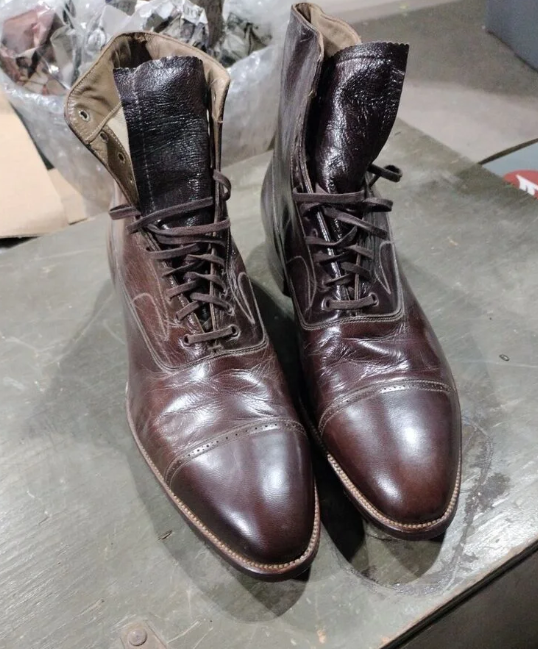Observation of Men\'s Boots in the Early 20th Century: The Evolution of the Edwardian Era
Reading times:85 Update time:2025-06-04
At the beginning of the 20th century, men's shoes had no fundamental changes in overall shape and structure compared to the Victorian era. It was not until the Edwardian era (around 1890) that men's shoes gradually evolved towards more modern styles. By the 1910s, the popularity of low cut Oxford shoes among urban men had surpassed that of traditional formal boots. This shift not only reflected changes in fashion trends, but also reflected changes in men's daily lives and wearing habits.
In the 1900s, lace up boots were still a daily footwear for almost all men, regardless of their social class. From the working class to urban gentlemen, there is a clear distinction in styles, materials, and color combinations. With the increasing participation of men in outdoor and leisure activities, short lace up Oxford shoes have become increasingly popular among the upper middle class, becoming a transitional shoe that can be worn in both formal and semi formal occasions.
During the Edwardian era, there were several significant updates in the details of men's shoes, such as the Cuban heel or military heel gradually replacing the layered wooden heel commonly used in the Victorian era, with a height mostly between 1.25 and 1.5 inches; To avoid wrinkling of the boot, a pull ring is added to the back of the boot; The shoelaces have evolved from circular to wider and flatter webbing styles, emphasizing visual effects while being easy to put on and take off.
The most common men's boots during this period were black lace up short boots, with a plain toe design or supplemented with toe cap details. In order to enrich the texture and layering of the shoe upper, designers often use different colors or types of leather to make shoes. The selected leather materials include horsehide, kangaroo leather, and calf leather; More refined gentlemen prefer boots made of woolen fabric, satin, or canvas, or opt for more decorative two tone boots such as brown black, gray black, or cream brown colors. These types of boots are commonly seen for spring and summer outings and rural residences, but still appear too frivolous in urban environments at the time, so they are generally not accepted.
It is worth mentioning that another popular type of men's boot in the 1900s was the Congress Boot (p15-16), which did not have shoelaces and relied on double-sided elastic bands for quick on and off. Its convenience was greatly appreciated, and some styles even attempted to combine the elastic structure with traditional laces. Decades later, this design evolved into the widely known 'Chelsea boots' today.
Spat top boots were not completely out of the mainstream at the beginning of the 20th century. Although they gradually declined among young people, they were still favored by some elderly people and men who pursued exquisite dressing. After 1910, this shoe briefly regained popularity among fashionable youths, but ultimately failed to return to the mainstream position.
The short boots worn by the working class, although similar in outline to gentleman's boots, are more practical in material and structural treatment, emphasizing wear resistance and flexibility. They are usually paired with thicker and lower density shoelaces, dust-proof tongues, and rubber soles to meet the needs of heavy daily labor. The demands of different professions and seasons also led to the emergence of various functional styles, such as all-weather rubber boots, oiled boots, high boots for rugged terrain, and felt boots for cold logging operations. These are typical examples of the evolution of work boots at that time.

